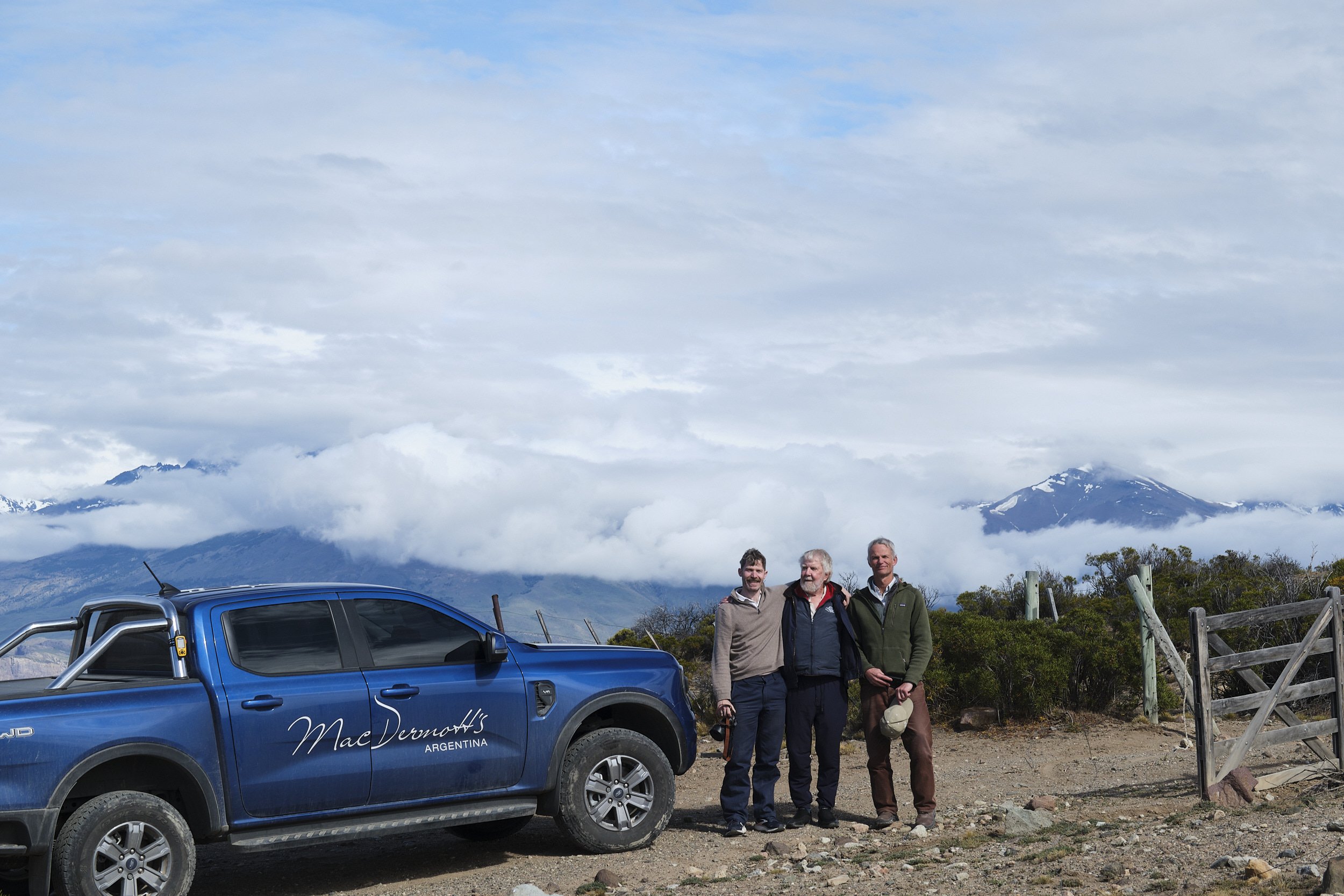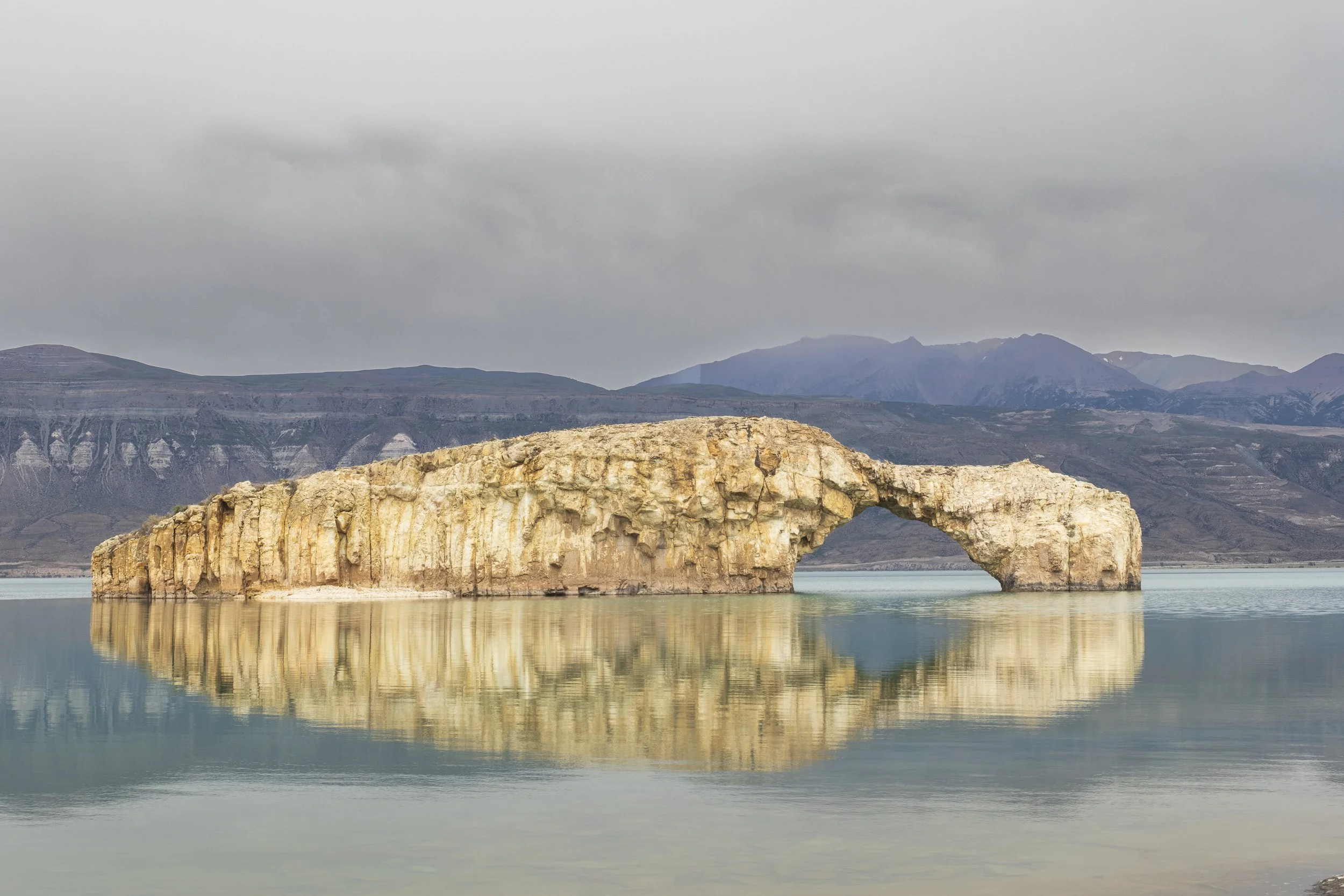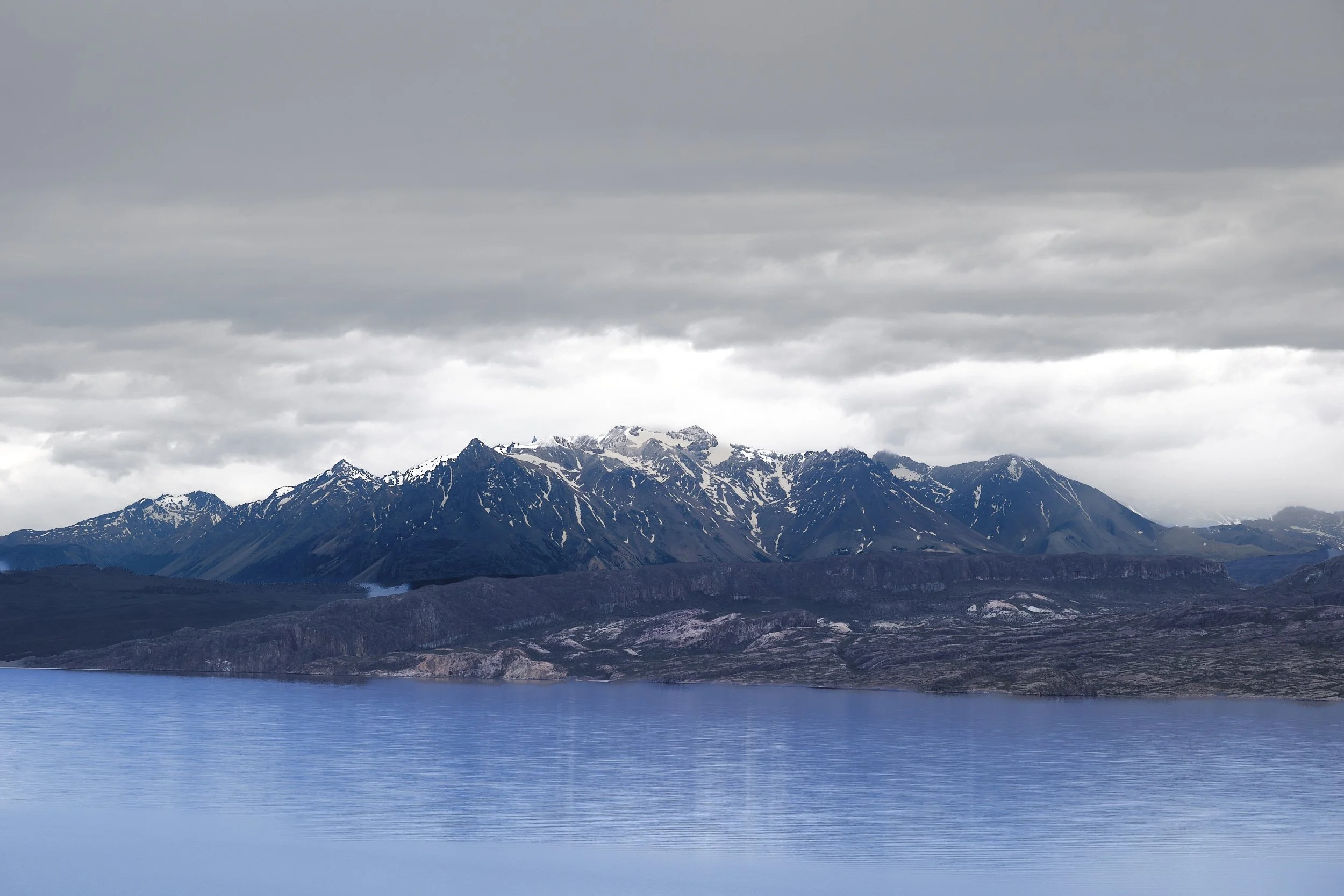Lagos del Furioso, Patagonia - November 25, 2024
From L to R, our truck, Hugh, Robert, Guido, the Andes
Sunday, November 24 - Long day’s drive on Sunday, longest of our trip, approximately 800k’s. Left Islas Leones at about 7:30 and arrived in Lagos del Furioso at about 19:30, straight run of 12 hours with brief pit stops for gas and bio breaks, snacking in the car as we drove. A mix of tarmac and dirt highways, so on balance we made very good time, original ETA was between 20:00 and 20:30.
Fascinating changes of landscape as we drove from the Atlantic coast to the foot of the Andes, flat coastal plains turning into rolling hills, back to a flat dry plateau and then into hilly country leading up to the mountains. Only characteristic shared by all terrains was dry, low shrubby ground cover, clumps of dry grasses and no trees. In fact the only trees to be seen are those that mark a settlement or the outbuildings of an estancia, (farm and very large, open land and used for grazing cattle or sheep), and the trees to be seen there are invariably poplars, planted as windbreaks to shelter building from the incessant wind. Pleasantly, the shrubby bushes and grasses covering the landscape are bright and green with spring. In a month or two when summer arrives everything will be back to their normal dry and dusty look.
Armadillo
Our lodge at Lagos del Furioso was built about 30 years ago as a way of attracting tourists to the region and is now run by the original owner’s son. Guest rooms are huts built among the poplar trees surrounding the property and the whole operation is reminiscent, for my local Ontario readers, of a 1950’s cottage-country lodge. Food however is significantly better than it would have been at its suggested precursor.
On our drive, at a little town about 3 hours drive from our destination, we stopped to pick up Guido, our local guide who will spend the next 5 days with us.
Reflected arch, very rare, still day
Monday November 25 - Off after breakfast for an exploratory driving tour of the area. The first thing to know about Patagonia and one of the most important things that helps shape the landscape is the weather. There is really only one weather pattern in western Patagonia, where we are located, and that is a strong, persistent west wind that blows from the Pacific, hits the Chilean side of the Andes, is forced up and over the mountains and in the process dumps most of its moisture as rain in Chile. It is much drier when it descends into Argentina and that continuing, strong dry west wind means that the landscape is shrubby and grassy rather than covered with forests as in Chile. The other two major landscape sculptors are vulcanization and glaciation. The Andes are young mountains, still being formed and the landscape is very volcanic, so not a soft weathered terrain except in those areas adjacent to the mountains that were heavily glaciated during the 4 ice ages that have covered the land in the last million years, the last of which receded only about 10,000 years ago. So a harsh, dry, windy land, torn by great canyons and featuring residual lakes and extensive dried lake beds created by melting glaciers, everything scoured and shaped by the persistent, abrasive wind that is continually blowing.
What’s particularly fascinating about Patagonia is the fact that since there is so little vegetative cover on the landscape, no forests or wide expanses of heavy tree cover, everything in the terrain is laid open to be read like a book. Easily visible are great tracts of ageless lava flow, basalt cliffs and peaks, sweeping rifts of glacial moraine and beautifully articulated cake-like layers of ocean-bottom sediment going back millennia. An earth scientist’s dream landscape. What is even more amazing is that so much of it has not been studied, indeed many peaks that have never been climbed, many areas never visited or barely explored.
A captivating, interesting and stunningly beautiful country that I find utterly compelling.
Andes
I also learn that we are here at a highly unusual time. When we arrived on Sunday evening and all through Monday the air was absolutely still and I was able to take some interesting landscape shots which included the mountains with their reflections caught in a still lake. Guido says that he has never experienced this in the 30 years that he has lived in the area; maybe a guide’s little exaggeration, but certainly very unusual. Additionally, the weather at this time of year is normally very dry and nothing more than a brief shower is the rule. In fact Guido tells us that lightning and thunder are unheard of here (pardon the pun), since there are no competing air masses in collision that cause lightning and thunder, instead there is only the dominating west wind always moving in one direction. And yet overnight we had a continuing intense rain that lasted for a couple of hours accompanied by peals of thunder.
Andes
In fact that intense rain had consequences which I’ll cover when I tell you about the following day’s activities.
We spent the day driving, walking and clambering over trails, fabulous vistas and terrifying cliff-edge drops. Heights are always very nervous-making for me and R shares my aversion to heights but sometimes you need to get the shot. The image above was taken after scrambling down a hillside to the ledge whose edge can be seen bottom left and shooting straight down to the bottom of the 200 metre drop to the river.
More to come!
Click on the map to to follow my route







